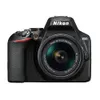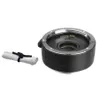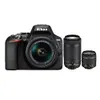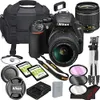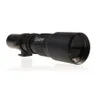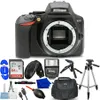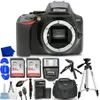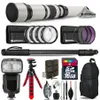Nikon D3500 vs D3400: Which camera should you buy?
The Nikon D3500 and D3400 are great beginner DSLRs, but which is the best choice for you? Here are the differences
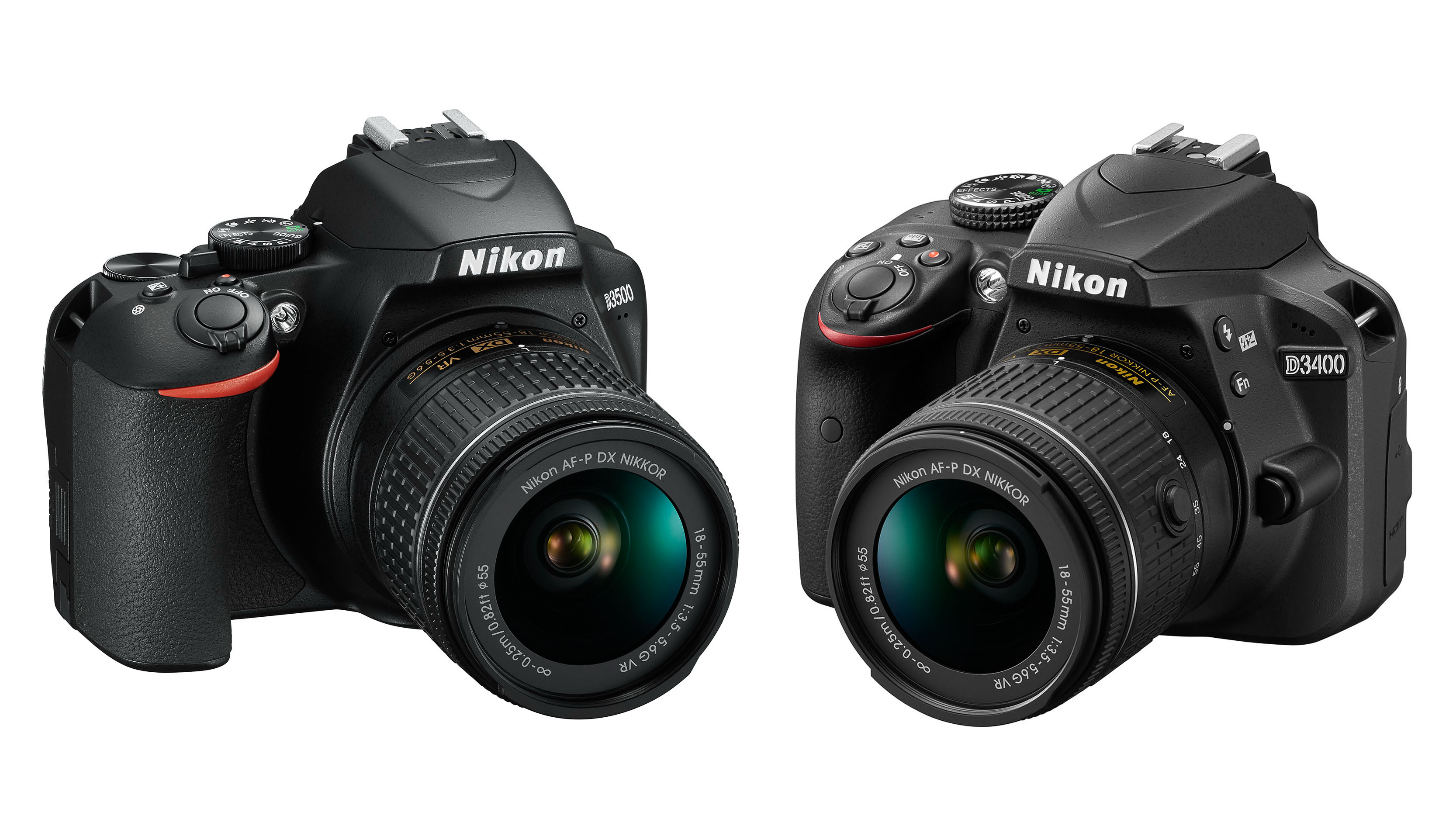
In this Nikon D3500 vs D3400 comparison guide we help you pick the best option from Nikon's entry-level DSLRs – and help you find the best price.
A great way of getting into the Nikon system for the first time is by trying out one of its budget DSLRs. With the Nikon D3400, recently succeeded by the D3500, it means there will be some great deals to be had on its predecessor. To find out which is the better budget beginner DSLR for your particular needs, and make a more informed decision when buying, read on as our two contenders go toe-to-toe.
• Update: The older Nikon D3400 is now almost impossible to buy new, but there are still lots of examples on the used market that are worth getting – and you will save some money. Alternatively, if you've already got a Nikon D3400, this comparison will help you decide whether it's worth upgrading.
Below we run through the D3500 and its older D3400 sibling’s essential key features and our opinions of them. You’ll also find some of the best current prices for both these digital SLRs, which seek to provide shedloads of beginner friendliness and responsiveness.
It’s fair to say that in straight replacing the Nikon D3400 with its numerically superior Nikon D3500, Nikon has updated and refreshed its classic entry-level APS-C sensor incorporating DSLR design. It’s clear the intent is to make it even more appealing to first time DSLR owners perhaps trading up from a smartphone or point-and-shoot camera for access to a massive variety of Nikon F-mount, DX format lenses and accessories to improve their image creation.
• Read more: Nikon D3500 vs D5600
While they’re not the latest mirrorless camera must-haves, the size and relative weight here also makes both the D3400 and D3500 sound alternatives nonetheless. Added to this, the newer Nikon D3500 is not only its maker’s lightest DSLR, at just 415g with battery and memory card, it was also its least expensive at launch, with plenty of deals to be had at the time of writing with kits that bundle an 18-55mm lens with it too – everything you need to get started.
And so, in combination, are these the best entry level DSLRs today? And if so which is the better deal? Read on to find out…
Nikon D3500 vs Nikon D3400: Sensor and processor
Why you can trust Digital Camera World
For starters, both of the DSLRs under investigation here feature an APS-C sensor, delivering potential first time Nikon users a 24.2 million pixel effective resolution. Both DSLRs also feature the fourth generation of their manufacturer’s processor; for Nikon that’s the EXPEED 4. The combination of sensor and processor on both is claimed to produce results that are richly detailed. Nikon, in contrast to say Canon, Panasonic or Sony, tends to favour more naturalistic results that you might want to tweak later yourself to add a bit of added visual dynamism and punch.
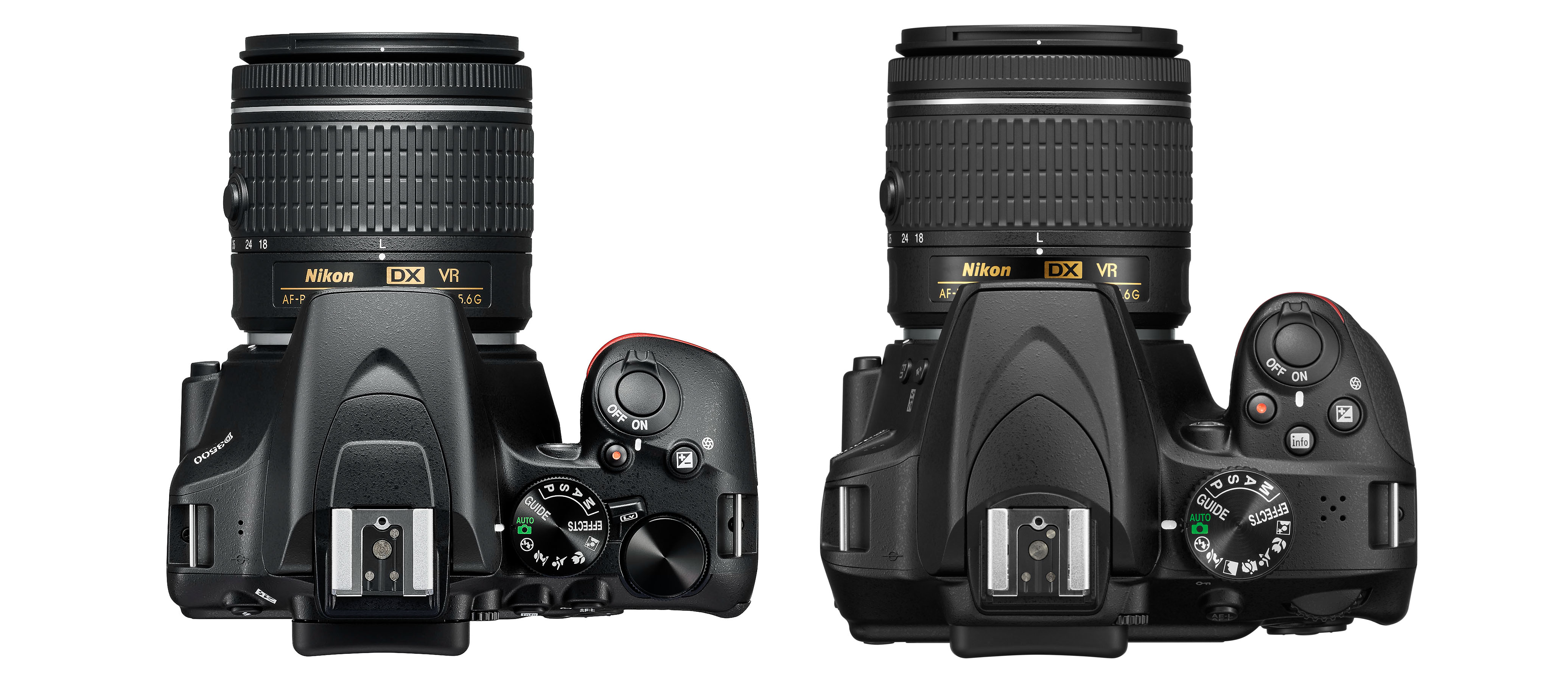
Nikon D3500 vs Nikon D3400: video
These starter DSLRs offer the ability to shoot up to Full HD quality video clips of less than 30 minutes maximum duration alongside still images. There’s no 4K video option here then – but that’s no surprise, due to the fact that these are relatively inexpensive entry levels DSLRs.
On the Nikon D3400, there are a variety of frame rates selectable when shooting Full HD 1920x1080 pixels video clips, including being able to achieve a maximum video frame rate of up to 59.94fps; the other options being 50fps, 29.97fps, 25fps and 23.976fps. Alternatively, users can choose to save the capacity of their media card by shooting a less data hungry 1280x720 HD clips. Still, manual control over exposure may be enabled in video mode and instances of rolling shutter are only ever an issue if panning with the camera at speed.
Similarly, with the D3500 also being a starter DSLR, we don’t get the luxury of 4K resolution video capture here, but most amateur videographers will be happy with its Full HD 1920x1080 pixel clips. The user selectable frame rates are also exactly the same as those given for the D3400 above. When shooting video, users have access to ISO100 to 25600 light sensitivity settings.
With audio captured via the cameras’ tiny built in mono microphones, it goes without saying that we’re not capturing broadcast quality audio here; that would require a good quality external microphone and the ability to use one. It should be pointed out that there is no external microphone port on the D3400 or D3500.
Nikon D3500 vs Nikon D3400: burst shooting (fps)
Maximum continuous capture speed for the Nikon D3400 and its newer D3500 sibling remains at five frames per second, which, while better than the 3fps practically all DSLRs in this price bracket would once offer, is not going to make them any photographer’s first port of call when choosing a model for sports or action photography.
Still, performance here remains adequate for most casual shooting situations, like tracking the kids and pets running around, and if primarily shooting JPEG. The cameras will undoubtedly face more of an insurmountable challenge when shooting Raw files in bursts. There are better cameras that offer a better frame rate if you’re prepared to spend more than you would do on these general-purpose budget offerings.
Nikon D3500 vs Nikon D3400: AF system
Both the original D3400 and the more recent D3500 take the ‘if it ain’t broke don’t fix it’ approach, in employing the same phase detection auto focus system with 11 selectable focus points and one cross type sensor – specification pretty much in line with most entry level, budget priced DSLRs – with said points arranged in a diamond like formation. The fact that this specification hasn’t altered one jot between successive generations of this starter DSLR indicates its maker wants to maintain some degree of separation between its entry-level DSLR and more premium priced APS-C models. Nevertheless Nikon maintains that its D3500’s AF system will keep subjects razor sharp, even when they’re on the move.
Focus is locked by pressing the shutter release button halfway, or by pressing the AE-L/AF-L button. In terms of AF modes, we get a choice of single point AF, dynamic area AF, auto area AF or 3D tracking, whereby all 11 points are put into usage. As these are both entry level DSLRs, on which auto focus will be deployed with more regularity than say, a pro-end DSLR, its specification in this area is therefore important, despite the relative modesty of its specifications.
When we tested the D3400 we found speed as regards AF locking onto target is good, though it slowed in darker conditions. Fortunately there’s an AF assist lamp to try and help fledgling photographers out, and, while only the central AF point is cross type for enhanced sensitivity, the points immediately above and below it prove to be more sensitive than surrounding points. This means even Nikon’s budget APS-C DSLRS make it to determine accurate focus even when shooting low contrast subjects. Though the AF will occasionally lose subjects moving around the frame if they weren’t in the direct centre to begin with, the cameras’ relatively solid performance being more than adequate given their starter DSLR status.
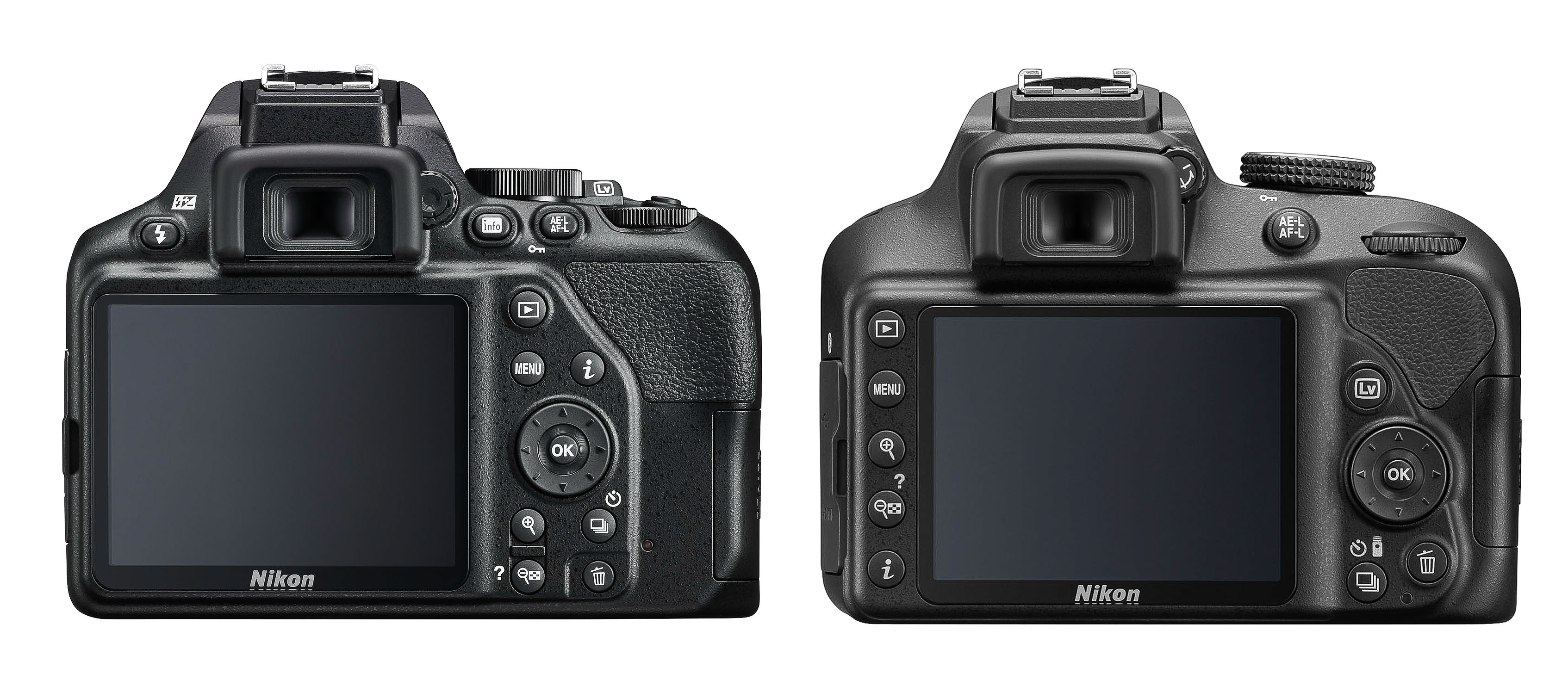
Nikon D3500 vs Nikon D3400: Viewfinder & LCD
As expected, both the Nikon D3400 and D3500 offer the standard issue 95% frame coverage. The LCD screen on the backplates of both, that otherwise displays menu and shooting information if the DSLR is not placed in Live View mode to aid video capture or manual focusing, is similarly run-of-the-mill in terms of specification.
On the Nikon D3400 and the newer D3500 we get the usual three inches in terms of size and respectable 921K-dot resolution with it. By contrast with the optical viewfinder, it provides 100% frame coverage and a 170° viewing angle, while brightness can also be adjusted on both cameras.
It is, however, a fixed LCD screen, by which we mean it is non-tilting, or to put it another way, non-angle adjustable. For users of both DSLRs this is a shame, as it doesn’t therefore offer the same degree of flexible and creative composition that a moveable screen does. It’s not a touch screen either, though again the omission of this feature is no surprise, given the camera’s introductory price.
The same is true on the D3500. Nevertheless, while the LCD here is fixed and isn’t touch sensitive, the sensibly spaced and implemented button layout is such that users are hardly likely to be accidentally activating features we don’t want.
Nikon D3500 vs Nikon D3400: build and design
Both the D3400 and D3500 offer that classic DSLR look and feel – chunkier than the typical compact mirrorless alternative – with handling pretty much exactly as expected. Button placement is relatively specious and uncluttered. On the Nikon D3400, which also boasts a polycarbonate build, the small, narrow handgrip provides an adequately stable hold, thanks to its soft rubber feel when kit zoom lens is attached. Nikon talks of a deeper grip for the D3500, but given that it is slightly more compact overall, that shouldn’t influence any buying decision. Unlike semi pro or enthusiast DSLRs that can operate down to -10°C, the budget pricing of both the Nikons ensures they are capable of operating in temperatures from zero to 40°C, rather than down to -10°C, as more weather-sealed semi pro models tend to offer.
Body weight for the D3400 is given as 445g with battery and memory card – or 395g without – whereas the D3500 is very slightly lighter at 415g with battery and memory card, or weighs 365g body only. Dimensions of the D3400 are quoted at a comparatively compact 124x98x75.5mm, while, again, the D3500 is just a smidgeon smaller still, at 124x97x69.5mm, not that you’d necessarily notice it, as we’re talking millimetres. Obviously the build of either Nikon doesn’t feel quite as premium DSLRs slightly higher up the DX format range, but then that is reflected in the pricing of course.
Smaller and lighter DSLR bodies do have disadvantages as well as advantages however – in that the photographer’s nose may press up against the LCD when trying to get an eye level with the optical viewfinder. On top of that, the fitting of longer lenses can cause imbalance and a ‘front heavy’ feel. All that being said, the lighter weight will ensure you’re more likely to take the camera out with you on a daily basis than a bulkier heavier DSLR.
It’s worth noting that Nikon does not include image stabilisation within the body of the D3400 or D3500, so that’s something to bear in mind when selecting lenses to go with it. Seek out the letters ‘VR’ in the model name to find optics with built-in anti shake.
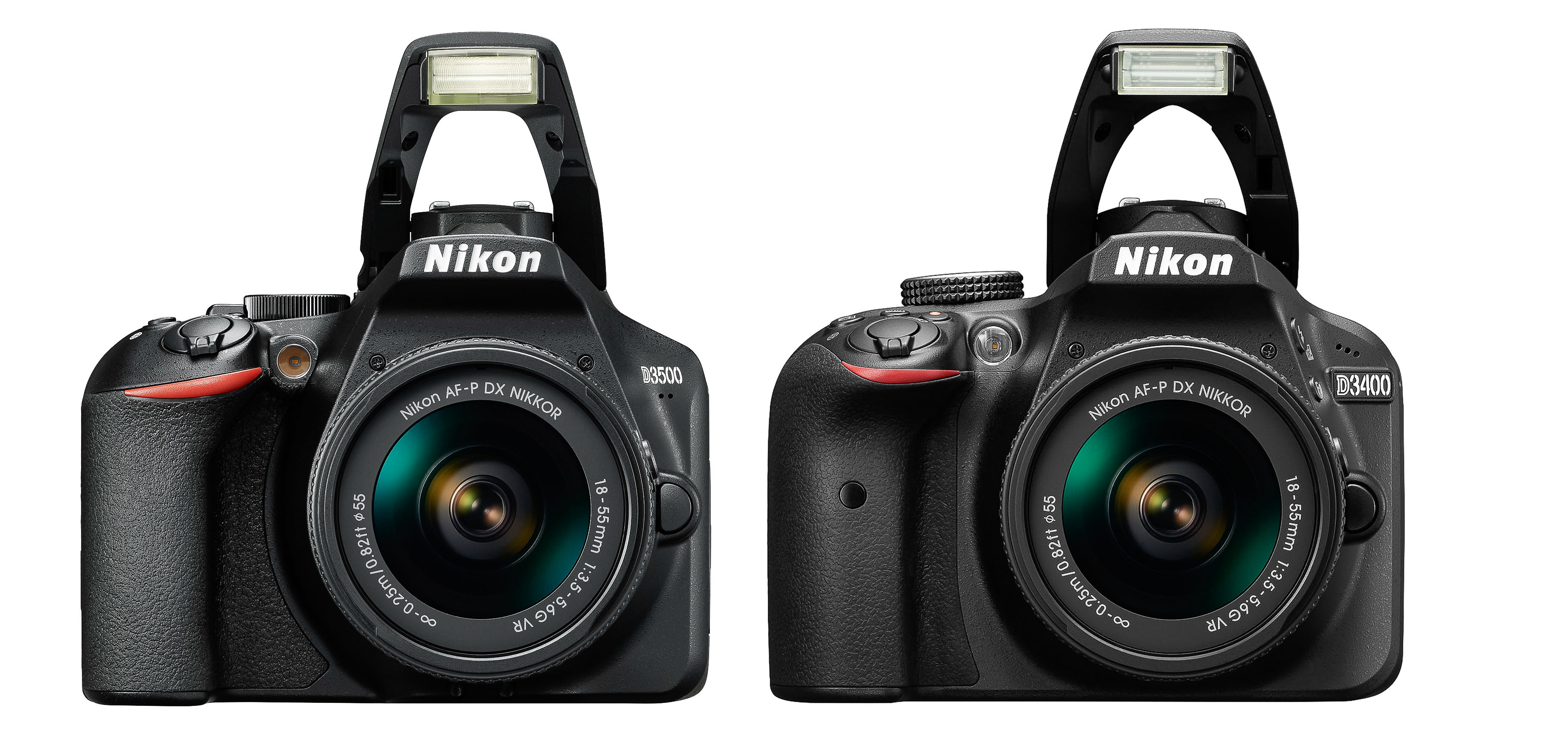
Nikon D3500 vs Nikon D3400: other features
The Nikon D3400 omits a low pass filter which should help it deliver better detail than would otherwise be the case and aid results when shooting across its wide light sensitivity range of between ISO100 and ISO25,600. A customisable ‘Fn’/Function button beside the lens mount provides the ability to directly access ISO settings if required.
Nikon also has some creative Picture Controls on board for those who want to give their images a definite ‘look’. Effects here include the likes of Super Vivid, Illustration and Toy Camera.
There’s no Wi-Fi connectivity on board either the D3500 or D3400, though we do get Nikon’s Bluetooth powered SnapBridge feature for image sharing. Ease of use is also crucial for an entry-level camera and here Nikon’s on-board Guide feature comes into its own – providing an alternative to the camera’s main menu system – while a press of the button singled out via a question mark explains key camera functions.
As we’ve noted above, on the D3500, again Bluetooth rather than Wi-Fi is offered by way of cable-free transfer, but at least this still lets us send images to a smartphone, as well as utilise a handset as a shutter firing remote. Light sensitivity settings on the newer DSLR also remain exactly the same as those quoted for the D3400 above. Again, whilst innovation is what typically sells, the manufacturer hasn’t felt the need here to mess with an old formula it clearly feels is working.
Nikon D3500 vs Nikon D3400: battery life
Both our entry level DSLRs boast use of the same EN-EL14a rechargeable battery pack.
The Nikon D3400 provides a very, very respectable 1200 shots from a full charge of its rechargeable lithium ion battery, with its maker putting this impressive showing down, in part, to the camera’s low energy design.
The Nikon D3500’s battery life also proves that camera’s plus point. A full charge of its lithium ion pack will provide 1,550 images, which is pretty incredible for a consumer digital camera and a good three or four times the amount that you’d get from a mirrorless interchangeable lens camera alternative at this price.
For us, this is really the only reason why you’d opt to buy the D3500 rather than the D3400 – those 350 extra captures before its battery gives up the ghost.
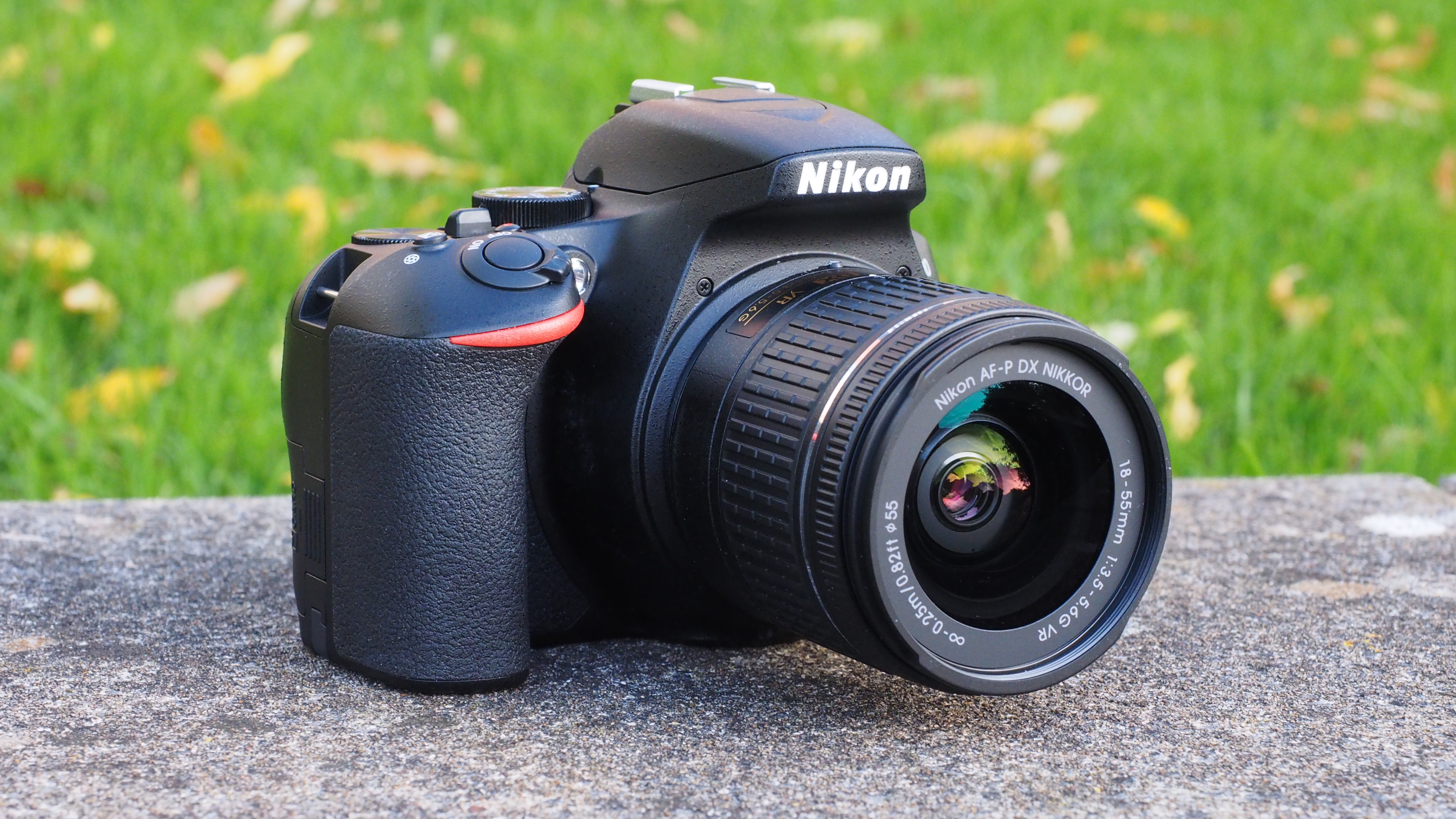
Nikon D3500 vs Nikon D3400: verdict
Whichever of these two Nikon entry level digital SLRs you buy and use in isolation, you won’t go far wrong. In a practical sense, there’s barely anything to differentiate one camera from the other, save for the fact that the later D3500 is very marginally more compact and smaller than the earlier D3400, but we’re talking by barely noticeable amounts.
If there is a preference to be expressed, you might want to opt for the D3500 however, because not only is it newer, but you’ll be able to theoretically squeeze 350 more shots out of it before its battery is expended, which is not to be sniffed at.
And that’s pretty much it, which may leave you scratching your head as to why Nikon bothered with an upgrade, save for the fact that it didn’t want to leave its entry level DSLR looking long in the tooth. Build and power performance aside, the core spec of 24 megapixel APS-C sensor, Full HD video capture, built-in monaural microphone, fixed 3-inch LCD on the backplate plus image processing sensor is exactly the same on both models.
So your choice of camera probably comes down to which unit you can get the best deal on. Fortunately we’ve provided you with a range of enticing deals to choose from right here.
More buying guides
• The best Nikon lenses
Get the Digital Camera World Newsletter
The best camera deals, reviews, product advice, and unmissable photography news, direct to your inbox!
Gavin has over 30 years’ experience of writing about photography and television. He is currently the editor of British Photographic Industry News, and previously served as editor of Which Digital Camera and deputy editor of Total Digital Photography.
He has also written for a wide range of publications including T3, BBC Focus, Empire, NME, Radio Times, MacWorld, Computer Active, What Digital Camera and the Rough Guide books.
With his wealth of knowledge, Gavin is well placed to recognize great camera deals and recommend the best products in Digital Camera World’s buying guides. He also writes on a number of specialist subjects including binoculars and monoculars, spotting scopes, microscopes, trail cameras, action cameras, body cameras, filters and cameras straps.
